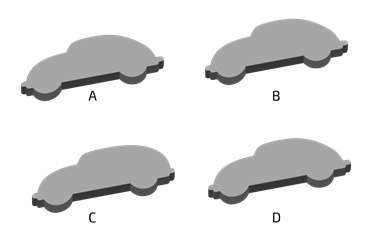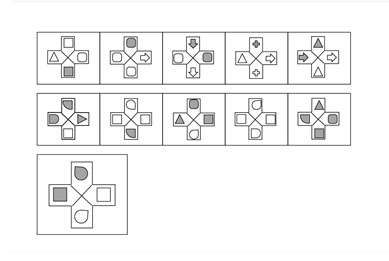
The Saville Assessment test is a popular personality and psychometric test used globally by employers in various industries.
It is created by Willis Towers Watson, a worldwide business management consultancy and talent acquisition company, which was earlier known as Saville Consulting.
A Saville test comes in different types but is utilized by hiring firms to measure a candidate’s suitability for a particular role.
The psychometric aptitude tests of the Saville Assessment cover all areas of ability, such as verbal, logical, numerical, and mechanical aptitude.
The Saville Assessment test is in a few cases taken as a stand-alone assessment but usually combined to formulate a blended assessment, published by Saville publishers under the company’s Swift series.
Professor Peter Saville, a co-founder of SHL, founded Saville Assessment and made the test look like the SHL tests.
These two tests have similar questions that look the same as what a test taker would anticipate in their line of work.
Saville, under the Wave banner, also publishes situational judgment tests and personality questionnaires.
The concluded parts of the tests are highly regarded as one of the most reliable indicators of a candidate’s personal preferences and work style.
We are going to look at some important facts regarding the Saville Assessment Test for you to gain valuable knowledge about what the test is and also understand how to tackle the test’s questions after going through the sample questions and answers at the end of the article.
20 Important Facts about Saville Assessment Test
- Understanding the Saville test
Saville offers a range of psychometric ability tests which aim at measuring a candidate’s verbal, numerical, abstract, error-checking, diagrammatic, and mechanical aptitude.
The Saville aptitude test is designed for those aspiring to a dream job, and it comprises charts, tables, and documents that you can often find in the office.
Each of the Saville aptitude tests consists of a set-aside topic and can be used to measure various cognitive abilities and personality traits.
- A total breakdown of the Saville test
Saville has two major test formats namely, Single Aptitude Tests and Swift Aptitude Tests.
The Single Aptitude contains a long version of Saville tests – more than 30 minutes in duration.
The Swift Aptitude on the other hand consists of a short, well-known version of Saville tests designed exclusively for use in an online platform and unsupervised format – less than 30 minutes in length.
Both of these two tests cover a similar range of aptitudes and topics and share questions of various complexity levels.
Saville tests are modified for each position and capability. According to target candidates and abilities, both the Swift Aptitude Test and Single Aptitude Test are classified into various categories.
- How to prepare for the Saville assessment test
Preparing for the Saville test requires good practice as with any type of psychometric test.
It’s important to know which test you will be sitting for as there are so many test categories – whether it’s going to be a good idea to take the Swift assessment, which abilities will be evaluated all the way through.
You don’t need any pre-existing knowledge as all tests are based on your innate skills.
However, the test can’t be that easy for you in view of the fact that there is added time pressure.
Ensure you take plenty of practice tests and learn to work as fast as possible with accuracy.
- How long is a Saville test?
The duration of the Saville assessment depends on the test itself.
Standalone tests are widely different in duration, being the shortest in only 6 minutes, while the longest lasts for 24 minutes. However, the Swift assessments can last between around 9.5 and 24.
- How will I take my Saville test?
The Saville test is run as either supervised or unsupervised versions. While the supervised part of the test takes a shorter time and is taken at a designated test center or within the place of work, the unsupervised version is done online, meaning that you can sit for the test anywhere you feel convenient.
- Is the Saville test difficult?
The difficulty of the Saville test depends on the level of the position applied for. The graduate, professional, and managerial roles are liable to use the more difficult assessment, with entry-level roles adopting more straightforward tests.
None of the tests is however easy because of the time pressure. But with practice, the skills you need can be improved.
- How is the Saville test scored?
Scoring on the Saville test depends wholly on the type of test that you are taking.
You will receive a mark for each accurate answer, which will be transferred into your overall score.
There are also scores that you will receive for speed, caution, and accuracy. When these are combined together, your aptitude profile will be made.
You’ll receive score breakdowns for each section if you are taking a Swift assessment.
- How to pass the Saville test
Passing the Saville test takes a combination of a few key tips to make that happen.
Below are a handful of tips to consider if you really want to pass the Saville test.
- Sharpen your skills
You should still make time for revision, or to be more precisely, develop your abilities, though there’s no pre-existing knowledge required.
Use word games and critical reading for verbal aptitude to extend your language comprehension and vocabulary, or rather refresh on basic arithmetic for numerical assessments.
There are some activities that will help you build your skillset on whatever test you’re taking.
- Take advantage of practice tests
Practice tests are important as they will help you understand the structure of the Saville test, the formats of the questions, and options for answering those questions.
You will get fully prepared on the test day if you can get familiar with the test format.
Taking lots of practice tests will also help you work on time limits.
- Get set up
If you are taking an unsupervised test ensure you are in a quiet environment to avoid unnecessary interruptions before you start the test.
Use an up-to-date browser and check your internet connection for consistency.
For taking notes or making rough calculations, you will need to take a pen and a paper along.
- Check details
Read questions in detail as rushing through the questions will cause you to miss details that are important to the task at hand.
Therefore, before attempting to answer, read each question cautiously and thoroughly.
- Balance speed and accuracy
Although employers are looking for attention to detail, they also want to know you can work under pressure with accuracy.
Try and complete as many questions as you can in the given time frame without compromising on precision.
- Saville situational judgment test
The Saville situational judgment test presents employers with the knowledge of how a candidate fits into their company by assessing their personal response to a variety of specially designed hypothetical conditions.
Questions of this test turn around a realistic workplace scenario, to which candidates are offered a response and are required to rate how efficient they consider this action to be.
The personality of the situational judgment test depends on the hiring company as it is made to suit each employer on the basis of the test.
- Which employers use Saville tests?
Because of Saville’s extensive library of assessments, they become a very competent test publisher.
They offer versions of tests designed for specific sectors, including the Swift assessment series.
The verbal comprehension aptitude test, for instance, is offered in exclusive versions for commercial, operational, administrative, and customer service roles.
Therefore, there are lots of employers who use the Saville tests in a variety of industries.
Some popular names of employers that use the Saville tests include but are not limited to Virgin Media, Merck, Johnson & Johnson, Jaguar Land Rover, and Dyson.
- Wave personality questionnaire
Saville Wave personality assessments use difficult rating systems to assess a candidate’s preferences, work styles, and behavioral tendencies.
These assessment tests are broadly seen as one of the strongest indicators of a candidate’s future performance and culture fit.
The Wave series consists of four test types utilized for various purposes.
The two commonly used tests in the recruitment process are Wave Focus Styles and Wave Professional Styles.
Duration is the only difference between the two tests.
Focus Styles is only 13 minutes long, while Professional Styles is a 40-minute test.
The two tests are rated on a scale of “very strongly agree” and “very strongly disagree”.
Your answers will be gathered into detailed reports of your working personality in terms of some factors such as communication, problem-solving, and relationships.
- Saville verbal analysis aptitude test
The Saville Verbal Analysis Test is a 24-minute assessment test that evaluates the ability to understand written information.
Candidates that take this test will have to make logical deductions based on a provided section of the text.
The test typically includes a series of passages followed by questions that need to be answered based on the information provided.
- Saville numerical analysis test
When a candidate’s mathematical skills and ability to analyze and interpret numerical data need to be assessed, the Saville numerical analysis test is used.
This test type is designed to assess how well a candidate understands tables of numerical and statistical data and their ability to make logical deductions.
This test usually takes about 2 minutes in duration.
- Saville diagrammatic analysis test
The Saville diagrammatic analysis test is used to measure an individual’s ability to assess procedures represented through diagrams.
This test usually takes about 24 minutes, in which the ability to analyze and draw conclusions from the given diagrammatic data is measured.
- Saville abstract reasoning test
The Saville abstract reasoning test evaluates the ability of a candidate to reason and make logical conclusions from information without making use of the common language.
The test typically comprises a sequence of shapes shown in a row.
The test taker has to find the logical pattern through inductive reasoning, after which he/she will be required to choose the correct missing shape, either at the end or in the middle of the sequence.
In the swift version, the test usually takes around 6 minutes or 16 minutes in the long version.
- Saville verbal comprehension test
The Saville verbal comprehension test is used to measure a candidate’s ability in understanding written text.
The candidate will be presented with some passages to read, such as short articles or operating instructions.
The candidates are required to answer questions about these passages.
They will have about 16 minutes to complete a full-length test, and the test will take around 3 minutes when combined with other comprehensions.
- Saville numerical comprehension test
The Saville numerical comprehension test measures a candidate’s ability to understand numerical data in the form of tables and graphs and carry out basic mathematical operations with the information gotten from the tables and graphs.
The candidates are to answer questions about the data.
In the online version, where they will normally also be expected to execute verbal and error-checking tests, they will have around 4 to 5 minutes while 16 minutes will be usually offered for the full-length version.
- Saville spatial reasoning test
For the ability to draw a spatial conclusion and visualize objects from multiple angles, the Saville assessment spatial reasoning test is utilized.
The candidate will be asked to solve rotational and transformation problems, visualize objects and identify a specific object that varies from the group.
The spatial reasoning test is typically used in aptitude tests for job positions that involve technical ability. This test usually takes about 8 minutes to complete.
- Saville executive aptitude test
The Saville executive aptitude test is designed for candidates applying for a role as an upper-level executive or manager.
The executives are required to fully understand written documents, communicate effectively, and take hold of abstract ideas.
This test is used as an objective means by which to assess these skills.
- Saville swift analysis aptitude test
This test is slightly different from the Saville Analysis Aptitude Test.
The two tests are of the same level of difficulty and have similar formats, but they do have a number of differences.
You can only take this category of test online while the Executive Aptitude
Test may be offered either on the internet or in-person at a supervised assessment center.
The Saville Swift Analysis Aptitude test is shorter with 18-minute duration, while its equivalent takes around 72 minutes.
The time for each of the tests is split equally into the three sections, with 6 minutes allowed to complete the 8 questions on each section of the Swift Assessment, while 24 minutes are offered to answer the 32 questions on each section of the executive assessment.
Finally, the last sections of the two tests vary slightly.
In the Executive Analysis Aptitude Test, you will have a series of abstract figures where you will be asked to decide the shape that answers the right pattern.
The other way round, the Swift Analysis Aptitude Test has a full diagram with a set of arrows linking various inputs and outputs.
You will have to determine and then apply the rules of the apparatus.
Saville Assessment Test Practice Questions and Answers
Here are some Saville assessment test practice questions and answers designed to help you in your test preparation expedition. Have a look below at these sample questions and answers.
Question One
Saville Spatial Reasoning Question
Which one of these cars is different?

Answer:
The correct answer is C.
Explanation:
If you look at the back of the car you see that it’s bigger than the other three.
Question Two
Saville Diagrammatic Analysis Test
Which set does the figure belong to?

Answer:
Set A
Set B
Neither Set A nor Set B
The answer is Set A.
Explanation:
In Set A, each of the boxes has a cross with shapes. For each shaded shape, there is exactly one shape that is not shaded.
In Set B, each of the boxes has a cross with two straight surface shapes and two curved surface shapes. For each shaded shape, there is no corresponding shape that is not shaded.
Figure: The figure has a cross with two shaded shapes with each having a corresponding shape that is not shaded.
Conclusion
When applying for a new position, there are a number of Saville assessment tests that you may be asked to take.
These fall under four main parts, including personality, logic, numerical reasoning, and verbal comprehension.
You will be sent a link that will take you to a timed, online test if your application is approved.
All of the questions of this test are multiple-choice, and you will get your score automatically upon submitting your final answers.
For the sake of verifying your scores, some companies decide to have you retake the test in an assessment center.
The Saville assessment test can be intimidating, especially when you have to take it for multiple positions.
But you can get yourself ready with practice, which will assist you to prove your abilities.
>> Learn how to make a great score in Aptitude Tests, including IBEW/NJATC electrical aptitude test, situational judgement test, Kenexa, trade apprenticeship, Exxonmobil, civil service, firefighter exam, FBI test, etc. ; prepare for the test with free but effective practice tests.












